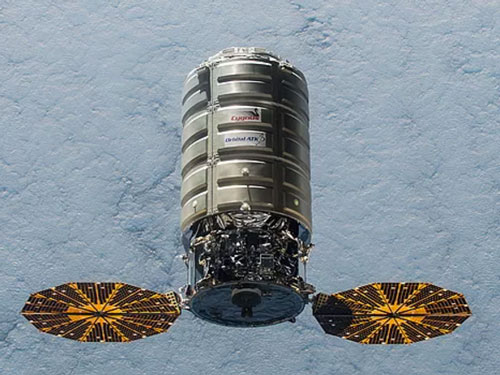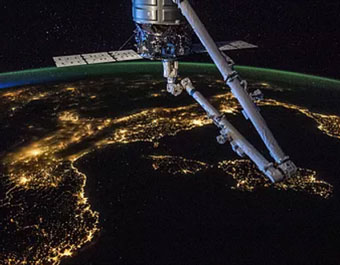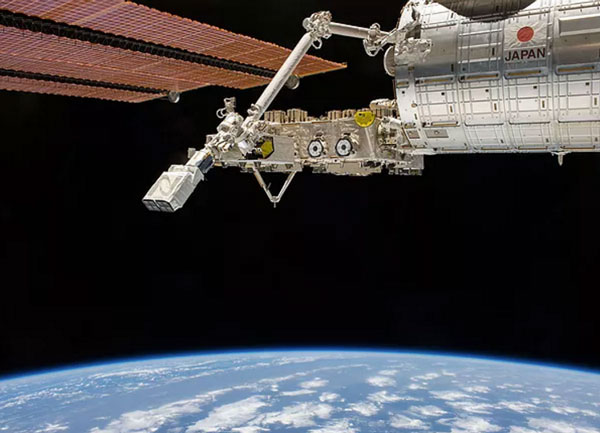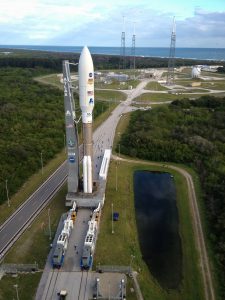Launch
First Phase: Transportation to the International Space Station
DUTHSat-GR01, alongside another 27 QB50 companions, will be launched to the International Space Station (ISS) inside a Cygnus automated cargo freighter. The Cygnus spacecraft (launch OA7) will be launched from Cape Canaveral Air Force Station Space Launch Complex 41 in Florida with an Atlas V rocket. Together with DUTHSat, there is another Greek QB50 satellite: UPSat-GR02, from the University of Patras.

The Cygnus Cargo Freighter is an unmanned spacecraft designed to transport supplies to the International Space Station (ISS) following the retirement of the American Space Shuttle.
Second Phase: Deployment from the International Space Station
After successful docking of Cygnus Cargo Freighter to the ISS, DUTHSat will be loaded by the astronauts into the Nanoracks deployer.

Cygnus docked to ISS

The Nanoracks Cubesat Deployer (NRCSD)
DUTHSat will be deployed from the ISS by the Nanoracks Cubesat Deployer, a rectangular tube that fires the satellite from the ISS, safely into an orbit at about 380km initial altitude, the same as the ISS. Then it will drift down from the orbit of ISS toward the target region of the Thermosphere. QB50-ISS cubesats will be launched periodically in a given timeline.




